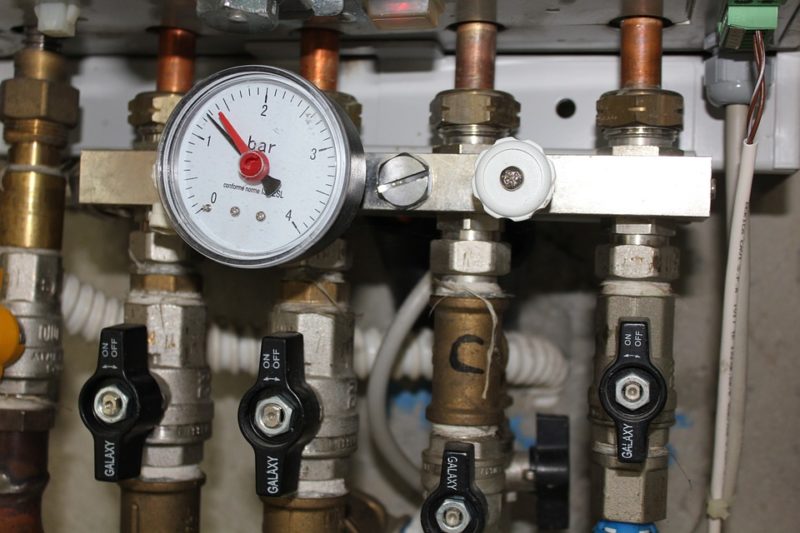Heating the pool does not only involve choosing the right heater type that will suit your needs, but you should also know how to plumb a pool heater. Several methods can be used for you, which we will be discussing in this post.
When we say plumbing, you are essentially making a way to connect the pool heater to the swimming and any other necessary equipment.
In this post, you are going to know the different plumbing methods to heat the pool. We will then help you assess which method will suit you best by providing the pros and cons of each method. So needless for you to wait any longer, let us get started!
Ways To Plumb A Pool Heater
A particular plumbing method is required for some heating types, while for some, you can choose whichever works for you. Even if the heat output and the heater are the same, the effect on your operation, power bills, and energy consumption can be different depending on the plumbing method that you use. In this section, let us look at the possible configurations on how to plumb a pool heater.
#1. In series
This plumbing method works both for heat pumps and gas heaters. If you use this for the solar heater, you will also need a booster pump. Either automatically controlled or manual valves are installed. This will push the pool water towards the heater. Hydrogen gas is the byproduct of the chlorinator. This shouldn’t be pumped through the pool heaters. You should install the pool heater first before the chlorinator when connected through this configuration. The same is true when booster pumps are used.
Pros
- Only one pump is needed
- Simplest configuration
- Cheap to install since it utilizes the pool’s water outlets and inlets
Cons
- Low optimum speed of both the chlorinator and filter
- It is forced to operate faster if the heater operation is less energy efficient
- Your heater needs a chlorinator and filter for operation
#2. Booster pump
A solar pool heater requires this type of configuration. Elevating the pool water toward the roof needs more work as compared to when you use a filter pump. It used check valves, also known as one way so that water inside the roof onto the roof will not flow back when the heat pump is not running. A solar heater can be used as a single heater source. But this can also be boosted by a heat pump or gas heater.
Pros
- Reduced installation cost
- Existing water outlets of the pool can be used
Cons
- Solar heaters are dependent on the sun
- It requires synchronizing with the pump
- Uses more energy
- The unit’s filter pump will restrict or block the water flow if it is not run with a solar booster
#3. Independent system
No matter what type of heating system you use, may it be a heat pump, gas, solar, it is recommended that you connect the heating system independently to the filtration unit. In this case, a separate fitting towards your swimming pool wall is required to bring cold water inside the filtration system and return the heated pool water to the swimming pool.
Pros
- It requires fewer gates or valves, thereby reducing the damage risk to the equipment when they are not set correctly.
- You can time the operation to minimize noise disturbance.
- Pump operation is significantly reduced.
- Pumps do not need to synchronize
- The heater’s operation cannot affect or be affected by water filtration.
- Water filtration may occur at night or when there is no sunlight anymore when using a solar heater. Thereby energy costs will be lesser.
- The pump can operate at a low speed during filtration.
- You can set the pup at its optimal speed to heat the water.
Cons
- You need to plumb two intake pipes and one return pipe into the pool’s walls, which means an increase in costs.
Heater Installation
The heater should be attached to the filter’s exit pipe to plumb the installation unit. The heater’s output will then be connected to the line towards the swimming pool. After you complete the plumbing, the next thing that you need to do is to plug the pool heater in. Your pool heater may include an electric part such as the digital interface. It would help if you also plugged this in somewhere.
If you plug in another pool equipment nearby, you can use a similar outlet for your pool heater. But if no outlet is available anymore, you need to contact an electrician for installation. Once you have completed the installation, you have to test your heater. To do this, turn on your pool heater and filter. Then, set the heater temperature higher than the pool temperature. The unit should start to heat the water. Otherwise, there is something wrong with the installation. You may also want to read about solar pool heaters.
It’s A Wrap!
Now, you are aware that there are different ways how to plumb a pool heater. Again, you should be concerned about the type of pool heater to get, but you need to consider what plumbing method to use to ensure efficient pool heating operation. You may want to read related articles; know how much propane does a pool heater use and how to size a pool heater.

